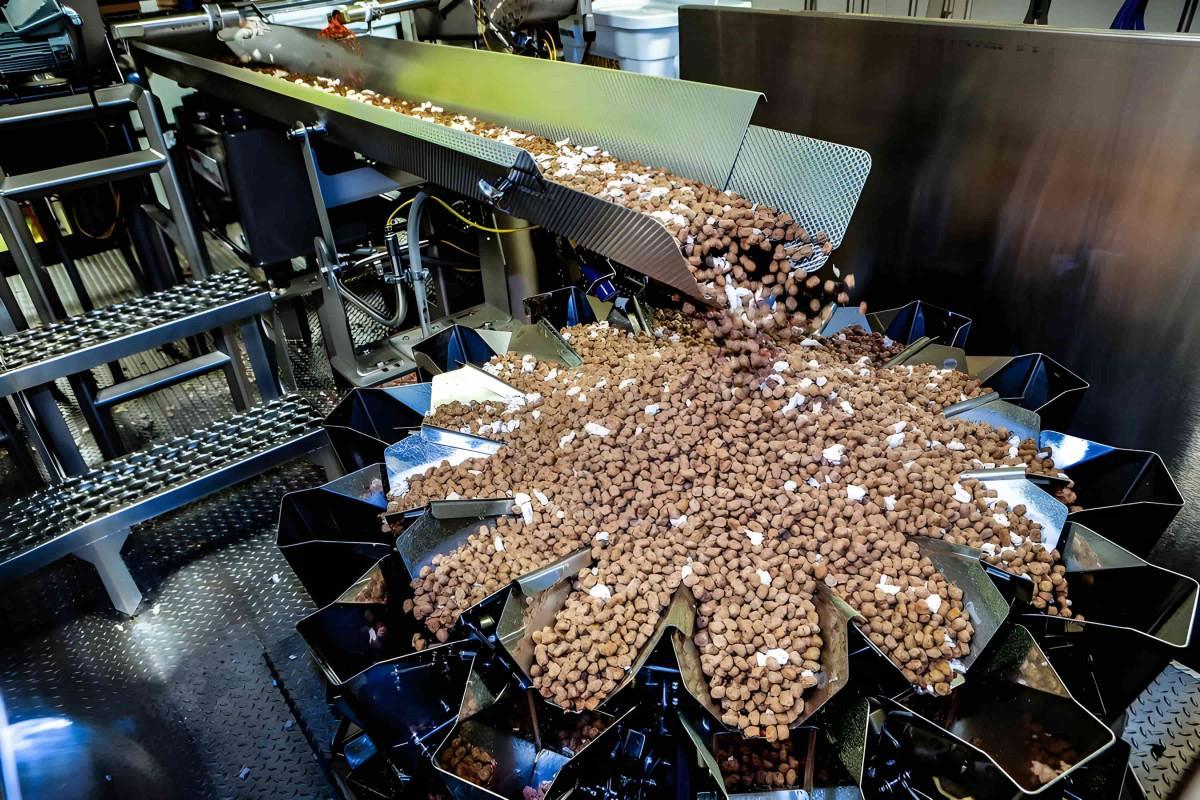The pet food industry is growing by leaps and bounds with a multitude of cat foods on the market. Gone are the days when you could only choose between 1 or 2 brands of dog food. Today, there is a wide range of dog foods to suit the needs and preferences of you and your dog. Let’s take a look at all the dog foods available today and their pros and cons.
How many types of dog food are there? There are two main ways to categorize dog foods: the first relates to whether the food contains all of the nutrients the dog needs, and the second describes how the dog food is prepared.
Complete foods and supplements
Complete food
By far, complete food is the most popular choice among dog owners. They can come in many forms including dry, wet and raw. To be legally labeled as ‘complete’, a food must contain all the nutrients a dog needs, in sufficient quantities to keep the dog healthy.
Most complete dog foods incorporate a variety of added vitamins and minerals. While some minerals may be added in ‘organic’ or ‘natural’ form, most of these supplements are man-made, i.e., they are produced synthetically.
Food supplement
Supplemental dog food is usually wet food or raw food. They do not contain all the nutrients needed to keep dogs completely healthy; and therefore, must be fed with other foods such as complete foods, homemade foods, raw meat such as chicken wings, etc.
Types of Dog Food
Below is a list of dog foods based on cooking method. All can be in complete or supplementary form.
Dry dog food
Dry food is a popular choice among dog owners. This is because of their convenience: available everywhere, no preparation is required, and no special storage requirements are required. Dry dog food can be produced in a number of ways:
– Extrusion: By far, extrusion molding is the most common cooking method for dog food. In the extrusion process, the raw materials (usually those that have been dried and pre-ground in powder form) are thoroughly mixed and passed through a giant boiler.
The mixture is then passed through a ‘stamping die’ where it is cut into individual beads, then rapidly dried with hot, cooled air and coated with oil to enhance the flavor of the product. they. This is the type of dog food that we often call dog food or dog food granules.
More and more people believe that the multi-level processing to produce dog seeds, especially the high-temperature processing, can destroy many of the natural nutrients contained in the ingredients, especially the seeds. vitamins, some amino acids and enzymes. Advocates claim that the process kills the parasites and can actually increase a dog’s digestive tract.
Whether it kills the parasites or not, in essence, this food has lost most of the nutrients that dogs need. Not to mention they are also loaded with unnecessary additives and toxic preservatives. You can read the article “Scary facts about dog nuts” to learn more
Baking: Baking is a cooking method that allows food to be cooked at a lower pressure than extrusion and thus can leave more nutrients intact. However, baking of dog foods often relies on a certain amount of wheat gluten to bind the dog food particles. This process usually involves the dog food passing slowly through a long oven on a conveyor belt. But gluten is very bad for your dog.
– Hydraulic Press/Cold Press: Cold pressed dog food is still relatively new on the market but is growing in popularity rapidly. As they have all the advantages of conventional cat food production; but not through high temperature can be harmful. However, the ingredients still have to be dried and milled before pressing and some types like cereal also have to be pre-cooked to a certain degree of processing, but the final step is certainly less expensive. much more than extrusion.
– Heat drying: If the above methods can lose nutrients in dog food, the heat drying method will retain more nutrients. The ingredients are usually fresh rather than ground or cooked.
Food is exposed to a stream of heated air, which gently removes water through evaporation. This results in less loss of protein, vitamins and enzymes compared to conventional cooking methods. Some heat-dried foods need to be added with water before being fed to your dog. So even though these packages may seem small, the volume of food you get from them is significantly larger.
Freeze-drying/sublimation drying: Freeze-dried dog food is made by first freezing the food, then gently heating the ingredients in a vacuum to remove moisture. This way, very little nutrients are damaged, making it arguably the most ‘natural’ form of dry dog food available.
Freeze-dried dog foods are quite expensive, but they have an amazing shelf life without any artificial preservatives. As with all heat-dried dog foods, you need to add water to the freeze-dried dog food before giving it to your dog.
Wet dog food
Among dog foods, wet food is also quite common. To create a can of wet dog food, the ingredients are mixed and cooked before being vacuum sealed into the container. They are then heat sterilized.
The temperature and duration of both cooking and sterilization can vary considerably, but typically, sterilization is above 100°C for up to 90 minutes. A lot of people believe that such high temperatures have the potential to damage some of the natural nutrients in dog food. However, vacuum suction and sterilization helps to ensure a long shelf life without the addition of any artificial additives.
Wet foods contain much more water than dry foods. This makes pate for dogs and cats the preferred choice of many people, especially for those who have lazy dogs with a history or urinary problems. However, the high-water content means you have to feed your dog more pate than dry food. Therefore, buying dog pate is more expensive than buying seeds for dogs.
Wet dog food comes in many forms:
Dog pates: You can be identified by their firmness, which is generally uniform. Pate currently makes up the bulk of the wet food market and is especially popular with higher-end manufacturers. In order to bind ingredients and achieve their signature texture, pate needs gelling agents and thickeners, some of which are controversial because of their unsafety.
Jelly: still holds a large market share in the popular wet food market. In these foods, meat/vegetable/grain ingredients are visible in this liquid or jelly food.
Raw food (raw)
Feeding dogs raw, raw meat is considered by many to be the most natural way to feed a dog and for over a decade it has become the fastest growing feeding trend in the UK. Many people make their own dog food, and over time it becomes a good bait for companies to jump on. More and more companies are making complete (or balanced) raw dog food. They are usually in frozen block form or chopped into chunks.
However, feeding raw dogs has also been criticized a lot. Many veterinarians and industry experts have raised concerns about the safety and nutritional balance of raw foods. This is a huge topic, often hotly discussed. You can check out the benefits and risks of feeding your dog raw here before you decide to feed your dog raw.
Like dry and wet food, raw dog food comes in both complete and supplement forms. It is worth noting that a significant percentage of manufacturers do not like to add synthetic vitamins and minerals to the feed. Instead, they rely on the natural and balanced nutrients in meat, bones and offal (fruits and vegetables can be added) to provide the nutrients your dog needs in dog food.
Fresh dog food
Of all the dog foods on the market, this is a fairly new one. They are pre-cooked fresh foods with premium fresh ingredients, cooked and packaged in trays or bags.
With fresh ingredients and a low degree of processing, whole fresh foods have the ability to retain a high percentage of natural nutrients, at least compared to conventional wet and dry foods. However, because there are no preservatives and because the food has not been pasteurized like wet food, this dog food does not keep its freshness for long.
For this reason, fresh dog food needs to be kept refrigerated even when covered. In the refrigerator, they usually last up to 14 days from the date of manufacture, but they can also be frozen and thawed afterwards before serving.
Summary
A lot of dog food is available in the market, and it is easy to get overwhelmed. They are basically divided into 4 categories: dry food, wet food, raw food and fresh food. Each type of dog food described above has its own processing methods with different pros and cons.
You’re sure to read all sorts of opinions on what you should feed your dog, what dog food to choose; but the final decision should be based on what is best for you (personal preference, budget, convenience, ethical issues, etc.).

